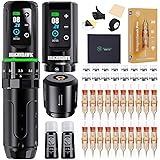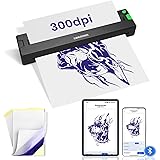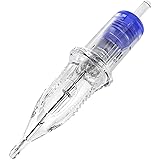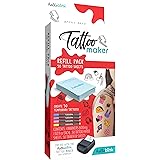Unlock Your Creativity: A Beginner’s Guide to Hand Lettering
Beginning your journey into the beautiful world of hand lettering is an exciting step, and if you’ve just watched the video above, you already have a fantastic foundation. This art form offers a unique blend of creativity and mindfulness, allowing you to transform simple words into stunning visual expressions. Many aspiring artists feel overwhelmed at the start, unsure of which tools to choose or how to even make the pen move gracefully across the page. Fortunately, learning hand lettering doesn’t require expensive supplies or years of art school; it simply calls for a willingness to experiment and consistent practice. We will now expand upon the seven essential steps discussed in the video, providing more detailed insights and practical tips to ensure your successful start in hand lettering.
1. Selecting Your First Hand Lettering Pens
The journey to mastering hand lettering begins with the right tools, and surprisingly, you don’t need professional-grade equipment immediately. As highlighted in the video, choosing a pen you’re comfortable with is paramount for beginners. This could be anything from a standard ballpoint pen to a specialized brush pen, each offering a distinct experience.
Brush pens are often the go-to for traditional hand lettering, known for their flexible tips that allow for varied line weights. For those just starting, options like Crayola markers or Pentel Touch brush pens are excellent choices. Crayola markers are particularly durable and forgiving, making them ideal for experimenting without worrying about damaging expensive tips. Pentel Touch brush pens, while slightly more refined, still offer excellent control and resilience, making them a favorite among many beginner hand lettering artists. Remember, the goal is to practice, and any pen that feels good in your hand will serve that purpose effectively.
2. Choosing the Right Paper for Hand Lettering Practice
Paper selection plays a crucial role in the longevity of your brush pens and the smoothness of your strokes. When learning hand lettering, the texture of the paper can significantly impact your experience. Rough paper textures can cause the delicate tips of brush pens to fray prematurely, shortening their lifespan and affecting the quality of your lines. This fraying occurs as the brush fibers catch on the tiny imperfections of the paper surface, gradually wearing them down.
To avoid this, opting for smooth paper is highly recommended. The video specifically mentions HP Premium 32 paper as an inexpensive yet high-quality option, offering a remarkably smooth surface that protects your brush pen tips. Other excellent choices include Rhodia notepads, Bristol Smooth paper, marker paper, and even tracing paper. You can often feel the difference by simply touching the paper; smoother papers will have a noticeably slicker feel. While using less-than-ideal paper won’t ruin your entire hand lettering journey, investing in smoother alternatives will undoubtedly enhance your practice and preserve your tools.
3. Understanding Downstrokes and Upstrokes in Hand Lettering
The foundational principle of hand lettering with a brush pen revolves around the distinction between downstrokes and upstrokes. This concept dictates the pressure you apply to your pen, creating the characteristic thick and thin lines that give hand lettering its unique aesthetic. Downstrokes are defined as any line segment where your pen is moving downwards on the page. For these strokes, you apply more pressure to the brush pen, causing the flexible tip to splay slightly and produce a thicker line.
Conversely, upstrokes are made when your pen moves upwards. During these movements, very light pressure is applied, allowing only the tip of the brush pen to glide across the paper, resulting in a delicate, thin line. Mastering this pressure control takes consistent practice and developing muscle memory. It’s about finding the right balance between firm and gentle pressure, ensuring a smooth transition between thick and thin lines to form beautifully flowing letters. This technique is what truly elevates simple script into artistic hand lettering.
4. Exploring Faux Calligraphy as a Starting Point
For many embarking on their hand lettering adventure, the technique of faux calligraphy serves as an invaluable stepping stone. This method allows you to create the illusion of traditional brush lettering using any regular pen, making it incredibly accessible and a fantastic way to build confidence before transitioning to brush pens. The process is straightforward: first, you write a word or phrase in your natural handwriting. Next, identify all the downstrokes within your written letters. These are the parts of the letters where your pen moved downwards as you formed them. For example, in the letter ‘n,’ both vertical lines would be downstrokes, while the connecting arc would be an upstroke.
Once identified, you then go back and add an extra line parallel to each downstroke, effectively thickening those specific segments. Finally, you fill in the space between the original stroke and the added line, creating the appearance of a thick downstroke. This simple yet effective technique immediately produces professional-looking results and teaches you the fundamental principles of thick and thin strokes without the added challenge of brush pen pressure control. Faux calligraphy is not just a beginner’s trick; it’s a legitimate art form that can be used indefinitely to produce stunning hand lettering pieces.
5. Mastering the Basic Strokes of Hand Lettering
Contrary to cursive writing, where you typically keep your pen on the paper for an entire word, hand lettering involves lifting your pen between each individual stroke. This deliberate lifting of the pen, even within a single letter, is a cornerstone of the art form and provides greater control, precision, and the opportunity to reset for the next stroke. Understanding and practicing basic strokes are fundamental to building a solid hand lettering foundation. These strokes are the elemental components that combine to form every letter of the alphabet.
Common basic strokes include various forms of ovals, underturns (like the bottom of an ‘u’), overturns (like the top of an ‘n’), loops, and compound curves. Each stroke requires specific pressure control for its thick and thin segments. By repeatedly practicing these individual components, you develop the muscle memory and coordination necessary to execute them flawlessly. This focused practice also allows you to concentrate on consistency in your lines, curves, and spacing. Moreover, the meditative repetition of basic strokes can be incredibly relaxing and therapeutic, helping to calm the mind as you create. This intentional process contributes significantly to the serene and mindful experience of hand lettering.
6. Assembling Letters with Hand Lettering Alphabets
Once you are comfortable with the basic strokes, the next exciting phase is putting them together to form complete letters and eventually words. While there are countless styles of hand lettering alphabets available, the key for beginners is to focus on mastering just one or two initially. This allows you to develop consistency and fluidity within a specific style before exploring variations. Practice sheets or tracing worksheets are invaluable resources at this stage. These sheets provide guides that you can trace over, helping you to understand the construction of each letter and how the basic strokes connect seamlessly.
Tracing is not cheating; it is a highly effective learning tool that builds muscle memory and familiarizes you with letterforms. Many artists, including the video’s host, Sarah, offer digital worksheets that can be printed out for practice. Alternatively, you can experiment with creating your own alphabet style once you feel more confident. This could involve modifying existing styles or developing a completely unique look. The process of forming letters also strengthens your understanding of negative space and overall composition, critical elements in creating visually appealing hand lettering pieces. Eventually, this practice will allow you to confidently create your own unique and expressive lettering styles.
7. Cultivating a Consistent Hand Lettering Practice
The final and arguably most crucial step in your hand lettering journey is consistent practice. As with any skill, mastery doesn’t happen overnight; it’s the result of dedicated effort over time. Many beginners find themselves stuck, unsure of what to practice or how to make their practice meaningful. The most effective practice is often deeply personal and connected to what resonates with you. Instead of aimlessly copying letters, consider what inspires you.
You might join online lettering challenges that provide daily prompts, encouraging you to create something new each day. Lettering meaningful quotes, song lyrics, or even the names of loved ones can transform practice into a therapeutic and rewarding experience. If time is a constraint, remember that even 10 to 15 minutes of focused hand lettering practice daily can yield significant results over time. These small, consistent sessions add up, gradually improving your technique and confidence. Treat your hand lettering practice not just as a task, but as a moment for creative expression and self-care, allowing it to become a calming and meaningful part of your routine.











